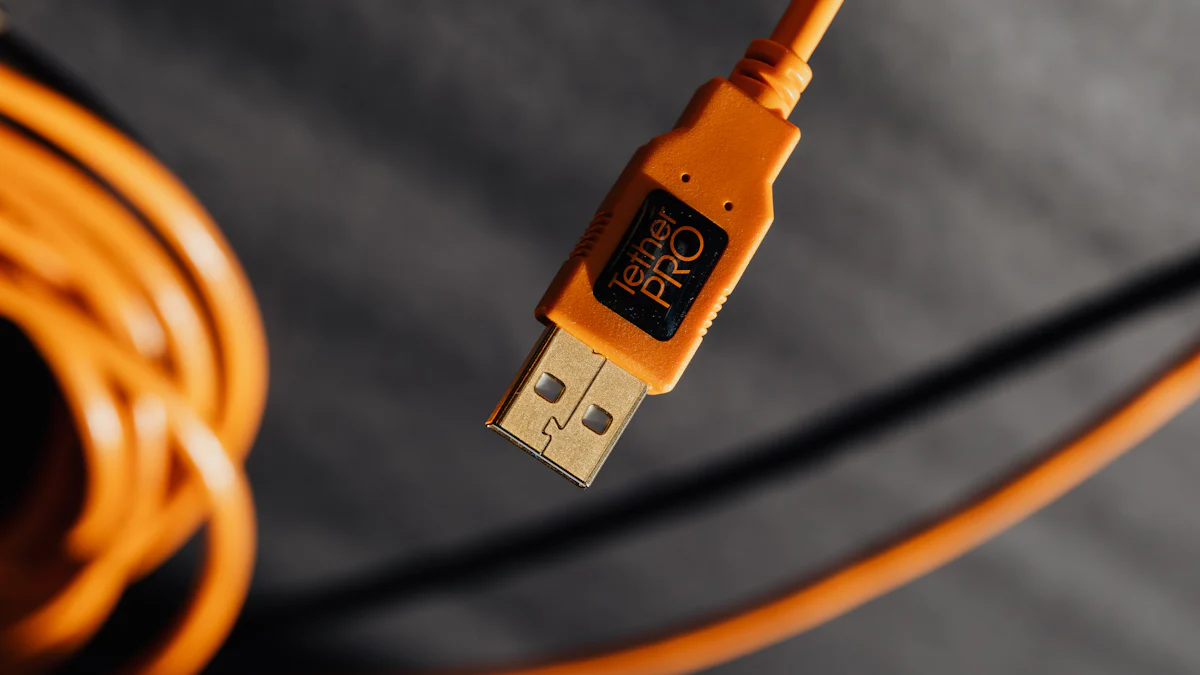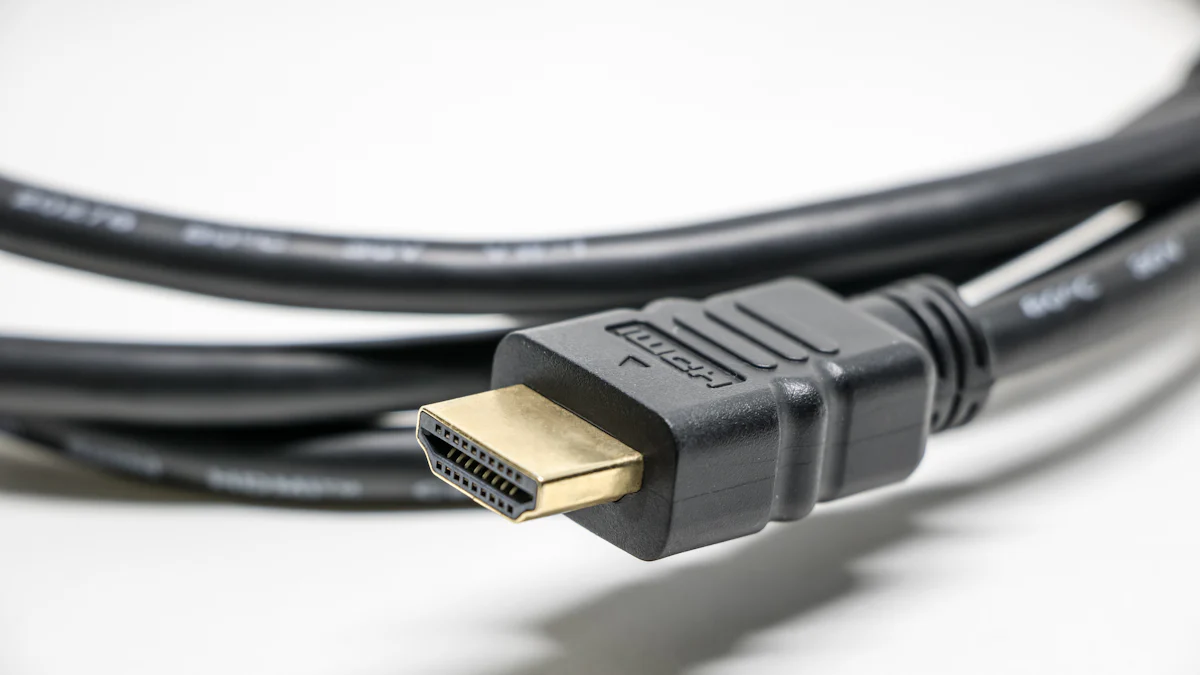Comprehensive Overview of Cable and Connector Types

In today's tech-driven world, cable & connector types play a crucial role in keeping our devices connected and functional. From your smartphone to your home theater system, these components ensure seamless communication and power delivery. The global market for these cable & connector types is booming, with projections reaching an impressive US$ 251.64 billion by 2034. This growth highlights their increasing importance in various applications. Whether you're using a coaxial cable crimping tool or exploring different connector types, understanding these elements can enhance your tech experience and ensure optimal performance.
USB Connectors

USB connectors have become a staple in our tech-savvy lives. They offer a flexible solution for connecting various devices, making them indispensable in modern cable networking environments. Let's dive into the different types and standards of USB connectors and explore their applications.
Types of USB Connectors
USB Type-A
The USB Type-A connector is the classic design that dates back to the 1990s. It's rectangular and flat, and you'll find it on most computers and peripherals. However, it only plugs in one way, which can be a bit tricky if you can't see the port. Despite this, its widespread use makes it a familiar sight in many devices.
USB Type-B
USB Type-B connectors are less common in consumer electronics but are often used in larger devices like printers and external hard drives. They have a square shape with slightly beveled corners, ensuring a secure connection.
USB Type-C
The USB Type-C connector is the latest evolution in USB technology. Its reversible design means you can plug it in any direction, eliminating the frustration of trying to fit it the right way. It supports high-speed data transfer and power delivery, making it a versatile choice for modern devices.
USB Standards
USB 2.0
USB 2.0 was a significant leap forward when it was introduced. It offered faster data transfer rates compared to its predecessor, making it suitable for a wide range of applications, from connecting keyboards to transferring files.
USB 3.0 and 3.1
With USB 3.0 and 3.1, you get even faster data transfer speeds. These standards are perfect for tasks that require moving large amounts of data quickly, such as backing up your computer or transferring high-definition videos.
USB 4.0
The latest in USB technology, USB 4.0, takes things to a whole new level. It offers improved data transfer speeds, better video resolution support, and enhanced power delivery capabilities. This makes it ideal for high-performance devices and applications.
Applications of USB Connectors
Consumer Electronics
In the world of consumer electronics, USB connectors are everywhere. From smartphones to tablets, they provide a universal solution for charging and data transfer, simplifying your tech experience.
Data Transfer
USB connectors excel at data transfer. Whether you're backing up important documents or sharing photos with friends, they make the process quick and easy. Their plug-and-play capability ensures seamless communication between devices.
Power Delivery
USB connectors also play a crucial role in power delivery. They allow you to charge a variety of devices using a single cable, reducing clutter and making your workspace more organized.
HDMI Connectors

HDMI connectors have become essential in modern audio and video setups. They offer a seamless way to transmit high-definition signals between devices. Let's explore the different types of HDMI connectors, their standards, and how they enhance your tech experience.
Types of HDMI Connectors
Standard HDMI
The Standard HDMI connector is the most common type you'll encounter. It features a 19-pin configuration and supports a wide range of resolutions and refresh rates. You'll find it on TVs, monitors, and other home entertainment devices. Its robust design ensures a stable connection for your audio and video needs.
Mini HDMI
Mini HDMI connectors are smaller than the standard version. They are perfect for portable devices like cameras and tablets. Despite their size, they maintain the same functionality, allowing you to connect your gadgets to larger displays without compromising quality.
Micro HDMI
The Micro HDMI connector is even more compact. It's designed for ultra-portable devices such as smartphones and some tablets. This tiny connector lets you enjoy high-definition content on bigger screens, making it ideal for presentations or sharing media with friends.
HDMI Standards
HDMI 1.4
HDMI 1.4 introduced support for 3D video and Ethernet over HDMI. It also brought the Audio Return Channel (ARC), which simplifies audio connections between your TV and audio system. This standard supports resolutions up to 4K at 30Hz, making it suitable for most home entertainment setups.
HDMI 2.0
With HDMI 2.0, you get enhanced bandwidth, allowing for 4K video at 60Hz. This standard supports a wider color gamut and higher frame rates, improving your viewing experience. It's perfect for gaming consoles and high-definition video playback.
HDMI 2.1
The latest standard, HDMI 2.1, takes things to the next level. It supports resolutions up to 8K at 60Hz and 4K at 120Hz, providing stunning clarity and smooth motion. Features like Dynamic HDR and Enhanced Audio Return Channel (eARC) ensure you get the best audio and video quality possible.
Applications of HDMI Connectors
Audio/Video Equipment
HDMI connectors are a staple in audio/video equipment. They connect your TV to Blu-ray players, soundbars, and more. This ensures you get the best picture and sound quality, enhancing your entertainment experience.
Gaming Consoles
For gamers, HDMI connectors are crucial. They connect consoles to displays, delivering high-resolution graphics and immersive sound. Whether you're playing on a PlayStation or Xbox, HDMI ensures a seamless gaming experience.
Home Theater Systems
In home theater systems, HDMI connectors simplify setup. They connect all your devices, from projectors to AV receivers, with a single cable. This reduces clutter and ensures you enjoy movies and shows in the best quality possible.
Ethernet Connectors
Ethernet connectors are the backbone of your network connections. They ensure that your devices communicate efficiently, whether at home or in industrial settings. Let's explore the different types of Ethernet connectors, their standards, and how they can enhance your connectivity.
Types of Ethernet Connectors
RJ45
The RJ45 connector is the most common type you'll encounter in Ethernet cabling. It features an 8P8C (eight positions, eight contacts) configuration, making it suitable for most networking needs. When choosing an RJ45 connector, consider the cable's construction. The fitment is crucial for a secure connection. You might need specific tools like RJ45 crimpers to ensure a proper fit.
GG45
GG45 connectors are an advanced version of RJ45. They offer backward compatibility while supporting higher frequencies. This makes them ideal for high-speed data transmission. If you're upgrading your network, GG45 connectors provide a future-proof solution.
TERA
The TERA connector is a unique option for high-performance networks. It supports a wide range of frequencies and offers superior shielding. This makes it perfect for environments with high electromagnetic interference. TERA connectors are often used in professional settings where reliability is paramount.
Ethernet Standards
Cat5e
Cat5e cables are an enhanced version of the original Cat5. They support speeds up to 1 Gbps and are suitable for most home and small business networks. If you're setting up a basic network, Cat5e cables provide a cost-effective solution.
Cat6
With Cat6 cables, you get improved performance over Cat5e. They support speeds up to 10 Gbps over short distances, making them ideal for more demanding applications. If you're looking to future-proof your network, Cat6 is a solid choice.
Cat6a and Cat7
Cat6a and Cat7 cables take things to the next level. They offer enhanced shielding and support even higher speeds over longer distances. These cables are perfect for data centers and large enterprises where performance is critical.
Applications of Ethernet Connectors
Networking
In networking, Ethernet connectors are essential. They connect your devices to routers and switches, ensuring seamless communication. Whether you're setting up a home network or a corporate infrastructure, Ethernet connectors play a vital role.
Internet Connectivity
For internet connectivity, Ethernet connectors provide a reliable solution. They offer stable connections with minimal interference, ensuring you get the best possible speeds. If you're tired of spotty Wi-Fi, consider using Ethernet for a more consistent experience.
Industrial Applications
In industrial settings, Ethernet connectors are indispensable. They connect machinery and control systems, enabling efficient data exchange. With the right cable & connector types, you can ensure your industrial network runs smoothly and reliably.
Audio Connectors
Audio connectors are essential for transmitting sound from one device to another. They come in various types, each serving a specific purpose. Let's explore the different types of audio connectors, their standards, and how they enhance your audio experience.
Types of Audio Connectors
3.5mm Jack
The 3.5mm jack is probably the most familiar audio connector. You use it with headphones, smartphones, and portable speakers. Its compact size makes it perfect for personal audio devices. You simply plug it in, and you're ready to enjoy your favorite tunes.
RCA Connectors
RCA connectors are a staple in home audio systems. They come in pairs, usually red and white, for stereo sound. You find them on TVs, DVD players, and older audio equipment. They provide a reliable connection for transmitting analog audio signals.
XLR Connectors
For professional audio equipment, XLR connectors are the go-to choice. They offer a secure connection and superior sound quality. You see them in microphones, mixers, and PA systems. Their robust design ensures they can handle the demands of live performances and studio recordings.
Audio Standards
Analog Audio
Analog audio refers to sound signals that are continuous and vary in amplitude. It's the traditional way of transmitting sound. You find it in vinyl records and cassette tapes. Analog audio connectors, like RCA and XLR, maintain the integrity of these signals, providing a warm and natural sound.
Digital Audio
Digital audio converts sound into binary data, allowing for precise reproduction. It's used in CDs, digital downloads, and streaming services. Digital audio connectors, such as HDMI and USB, ensure high-quality sound with minimal interference. They support advanced features like surround sound and high-resolution audio.
Applications of Audio Connectors
Personal Audio Devices
In personal audio devices, connectors like the 3.5mm jack are indispensable. They let you connect headphones, earbuds, and portable speakers. Whether you're listening to music on your phone or watching a movie on your tablet, these connectors make it easy to enjoy your media.
Professional Audio Equipment
For professional audio equipment, connectors like XLR are crucial. They provide a reliable connection for microphones, mixers, and amplifiers. In live performances and studio recordings, these connectors ensure you get the best sound quality possible.
Home Audio Systems
In home audio systems, connectors like RCA play a vital role. They connect your TV, DVD player, and stereo system. With these connectors, you can enjoy movies, music, and games with immersive sound. They make setting up your home theater a breeze.
In the ever-evolving world of audio engineering, staying updated with technology trends is key. As highlighted in the AES Journal, advancements in audio connectors continue to shape how we experience sound. Whether you're a casual listener or an audio professional, understanding these connectors enhances your audio journey.
Specialty Connectors
In the world of technology, specialty connectors play a vital role in ensuring high-speed data transfer and seamless video output. These connectors cater to specific needs and often come with unique features that set them apart from standard options. Let's dive into the different types of specialty connectors, their standards, and how they can enhance your tech experience.
Types of Specialty Connectors
Thunderbolt
Thunderbolt connectors are known for their incredible speed and versatility. You can use them for high-speed data transfer, video output, and even power delivery. Thunderbolt connectors are perfect for connecting external hard drives, monitors, and other peripherals. Their ability to daisy-chain multiple devices makes them a favorite among tech enthusiasts.
DisplayPort
DisplayPort connectors offer a robust solution for video output. They support high resolutions and refresh rates, making them ideal for gaming and professional displays. You can connect your computer to a monitor or projector with ease, enjoying crisp and clear visuals. DisplayPort connectors also support audio transmission, providing an all-in-one solution for your multimedia needs.
Lightning
Lightning connectors are Apple's proprietary solution for connecting devices. You find them on iPhones, iPads, and other Apple products. They offer fast charging and data transfer, ensuring your devices stay powered and connected. Lightning connectors are compact and reversible, making them user-friendly and efficient.
Specialty Standards
Thunderbolt 3
Thunderbolt 3 is the latest standard in Thunderbolt technology. It offers blazing-fast data transfer speeds of up to 40 Gbps, making it perfect for demanding applications. You can connect multiple 4K displays, transfer large files in seconds, and power your devices with a single cable. Thunderbolt 3's versatility and performance make it a game-changer in the world of specialty connectors.
DisplayPort 1.4
DisplayPort 1.4 takes video output to the next level. It supports resolutions up to 8K, providing stunning clarity and detail. You can enjoy smooth gameplay and immersive visuals with its high refresh rates. DisplayPort 1.4 also supports HDR, enhancing your viewing experience with vibrant colors and deeper contrasts.
Lightning Specifications
Lightning connectors follow strict specifications to ensure compatibility and performance. They support fast charging and data transfer, making them ideal for Apple's ecosystem. Lightning connectors are designed to be durable and reliable, providing a seamless connection for your devices.
Applications of Specialty Connectors
High-Speed Data Transfer
Specialty connectors excel at high-speed data transfer. Whether you're backing up your files or transferring large media, these connectors get the job done quickly and efficiently. Thunderbolt and Lightning connectors offer unparalleled speed, ensuring you spend less time waiting and more time creating.
Video Output
For video output, specialty connectors like DisplayPort provide exceptional quality. You can connect your devices to monitors, projectors, and TVs, enjoying high-definition visuals and smooth playback. Whether you're gaming, working, or watching movies, these connectors deliver an outstanding experience.
Proprietary Devices
Specialty connectors often cater to proprietary devices, offering unique features and compatibility. Lightning connectors, for example, are tailored for Apple products, ensuring seamless integration and performance. By using the right specialty connector, you can enhance your device's capabilities and enjoy a more streamlined tech experience.
As highlighted in a LinkedIn article, technological advancements in specialty connectors continue to drive innovation and expansion in the market. The demand for sustainable and innovative products fuels this growth, making specialty connectors an essential component in today's tech landscape.
Understanding different cable and connector types is crucial for ensuring your devices work seamlessly. Choosing the right connectors impacts your system's reliability and performance. You avoid issues like poor connectivity and data errors by matching connectors to their specific applications. This knowledge helps you make informed decisions, enhancing your tech experience. Remember, the right connector choice can prevent costly repairs and maintain customer satisfaction. So, take the time to learn about these essential components. Your tech setup will thank you for it!
See Also
Exploring Various Crimping Tool Options
Professional Opinions on Ideal Crimping Tools
Discovering Essential Crimper Add-Ons
